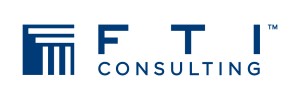11 September 2020
Taiwan has kept the COVID-19 infection rate low at 458 confirmed cases 1 and seven deaths despite the island’s close links with China. It was one of the few jurisdictions in the world that did not impose lockdown measures and kept its construction sites open and employees working.
What are the COVID-19 preventive measures?
Taiwan implemented epidemic interventions as early as mid-January 2020. On 15 January 2020, the Government identified the virus as “severe special infectious pneumonia” and shortly after activated the Central Epidemic Situation Command Center.2 A comprehensive epidemic control measure was then implemented, which included travel restrictions, quarantine protocols and integrated medical information platforms. According to the Journal of the American Medical Association,3 Taiwan engaged in 124 discrete action items to prevent the spread of the disease.
On 30 January 2020, the National Health Command Center (“NHCC”) and Ministry of Labour published a guidance note 4 to the construction and manufacturing industries. Taiwan has kept the COVID-19 infection rate low at 458 confirmed cases1 and seven deaths despite the island’s close links with China. It was one of the few jurisdictions in the world that did not impose lockdown measures and kept its construction sites open and employees working. The guidance note includes a risk assessment and prescribes detailed administrative controls, environmental controls and personal protective equipment to be implemented in the workplace
Unlike the construction industry in Singapore, which relies heavily on imported labour, the Ministry of Labour (“MOL”) of Taiwan prior to April 2020 only allowed foreign labour importation if the total construction cost of a project exceeded NT$10 billion (US$331 million) and the construction period must be 1.4 years or longer.6 As of June 2020, according to MOL, there were only 4664 foreign workers working on major construction projects.7 On the contrary, the Singapore construction industry employs 293,300 foreign workers8 of which approximately 48,000 workers9 have been infected with COVID-19. The Singapore Government introduced a “circuit breaker” on 7 April 2020 to contain the spread of COVID-19. The “circuit breaker” was lifted on 2 June 2020.10 Taiwan contractors have reported supply chain disruption on aggregate, elevators, mechanical ventilation and air-conditioning and fire services equipment.11 On the supply of aggregate, the Taiwan Regional Engineering Contractors Association12 reported difficulties in aggregate imports from China, which accounts for 30 percent of the overall aggregate used in Taiwan.13 Aggregate is a crucial material for ready-mixed concrete and constitutes 43 to 49 percent of the unit rate.14 As a result of the aggregate shortage, the price of aggregate has increased by NTD 40 ~ 50 per tonne15, and the price of ready mixed concrete has increased by 7 percent since January 2020.16
Can the effects of COVID-19 be deemed to be force majeure? What are the cost and time consequences? Taiwan is a civil law jurisdiction where laws are promulgated by the President after being passed by the Legislative Yuan. The Executive Yuan evaluates statutes and bills which are to be submitted to the Legislature.17 In the statement issued by the Public Construction Commission, Executive Yuan18 to the Taiwan Regional Engineering Contractors Association on 6 March 2020, it was confirmed that COVID-19 is a force majeure event. Any losses resulting from COVID-19 shall be handled according to the relevant provisions in the existing Government contracts. With regards to the termination rights arising from COVID-19, the Public Construction Commission made reference to Article 49 of “Essential Requirements for Procurement Contracts”19 which states, “Where it is due to force majeures such as natural disasters or extreme circumstances, or other circumstances not attributable to the contracting parties, that the contractual time-limit cannot be fulfilled by the entity or the supplier, the timelimit may be extended; or if the contract cannot be fulfilled, the contractual obligations may be exempted.” In summary, entitlements to the parties are largely reliant on the existing Government contract mechanism for force majeure events. The law reported cases in Taiwan suggest that there would be a lesser impact to the construction industry and fewer disputes are anticipated as a result of it.
For further information, please contact:
Shiao Ling Chow, Senior Director, FTI Consulting
shiaoling.chow@fticonsulting.com
Footnotes:
2: Taiwan Centers for Disease Control. 27 July 2020.
4: Ministry of Labor. 30 January 2020. “因應嚴重特殊傳染性肺炎-武漢肺炎-職場安全衛生防護措施指引” (in Chinese Language).
5: Pan Tzu-yu and Frances Huang. 24 April 2020. “COVID-19 contagion hurts business sentiment among manufacturers”. Focus Taiwan.
6 Pan Yi-Ching and Evelyn Kao. 29 March 2020. “Taiwan to ease restrictions on hiring migrant construction workers”. Focus Taiwan. https://focustaiwan.tw/business/202003290008
7 China Times. 27 July 2020. “政院擬開放 營造業進用外勞”. https://www.chinatimes.com/newspapers/20200727000145-260202?chdtv
8 Ministry of Manpower. “Foreign workforce numbers”. Work permit (construction) reported on Dec 2019. https://www.mom.gov.sg/documents-and-publications/foreign-workforce-numbers
9 Shabana Begum. 23 July 2020. “Covid-19 deaths kept low in dorms because older and sicker migrant workers were isolated first: Prof Dale Fisher”. Strait Times. https://www.straitstimes.com/singapore/covid-19-deaths-kept-low-in-dorms-because-older-and-sicker-migrant-workers-were-isolated
10 Jalelah Abu Baker. 2 June 2020. “Singapore’s circuit breaker and beyond: Timeline of the COVID-19 reality”. CNA. https://www.channelnewsasia.com/news/singapore/covid-19-circuit-breaker-chronicles-charting-evolution-12779048
11 New Taipei City Government. 9 April 2020. “因應新冠狀肺炎 紓困營建產業新北延長建照期限2年” (in Chinese Language). https://www.ntpc.gov.tw/ch/home.jsp?id=e8ca970cde5c00e1&dataserno=550f7eeca664d2af403974e064287699
12 Taiwan Regional Engineering Contractors Association. 18 February 2020. “因中國武漢肺炎,連帶影響砂石供需,導致預拌混凝土價格上揚” (In Chinese Language). http://treca3168.com/edcontent_d.php?lang=tw&tb=2&id=1684
13 China Times. 20 February 2020. “總統指示 提高台灣砂石產量” (in Chinese Language). https://www.chinatimes.com/newspapers/20200220000496-260118?chdtv
14 Taro News. 17 March 2020. “傳混凝土漲勢再起 公會澄清絕無聯合漲價” (in Chinese Language). https://taronews.tw/2020/03/17/638175/
15 Taiwan Regional Engineer Contractors Association. 18 February 2020. “因中國武漢肺炎,連帶影響砂石供需,導致預拌混凝土價格上揚” (In Chinese Language). http://treca3168.com/edcontent_d.php?lang=tw&tb=2&id=1684
16 National Statistics, R.O.C (Taiwan).
17 Executive Yuan. “Structure and Functions”. https://english.ey.gov.tw/Page/E43650B2CB14861B
18 Executive Yuan. 10 March 2020. “行政院公共工程委員會函,發文字號:工程企字第1090100202號”. (in Chinese Language) http://www.treca.org.tw/component/k2/6354-1090100202.html
19 Public Construction Commission, Executive Yuan. “Essential Requirements for Procurement Contracts”. https://www.pcc.gov.tw/cp.aspx?n=2E3C7FDAA51E3E73





